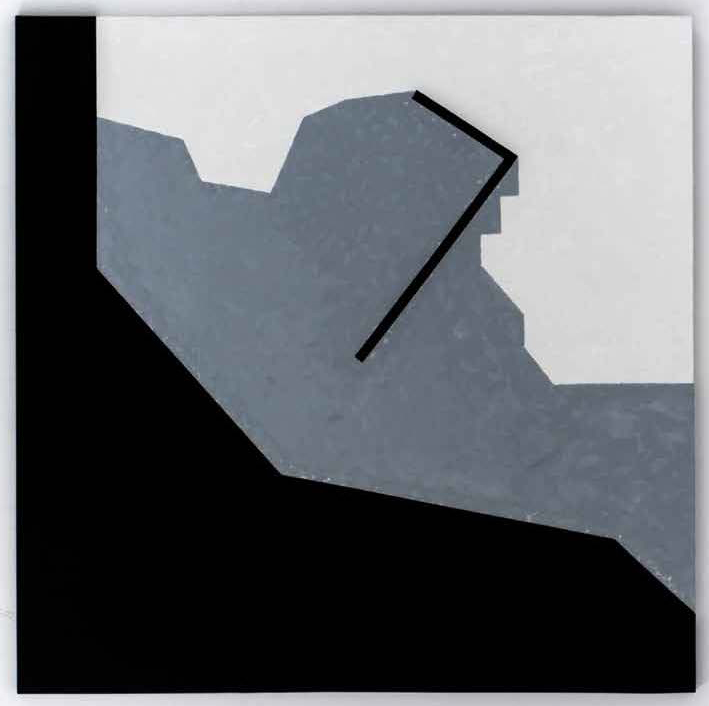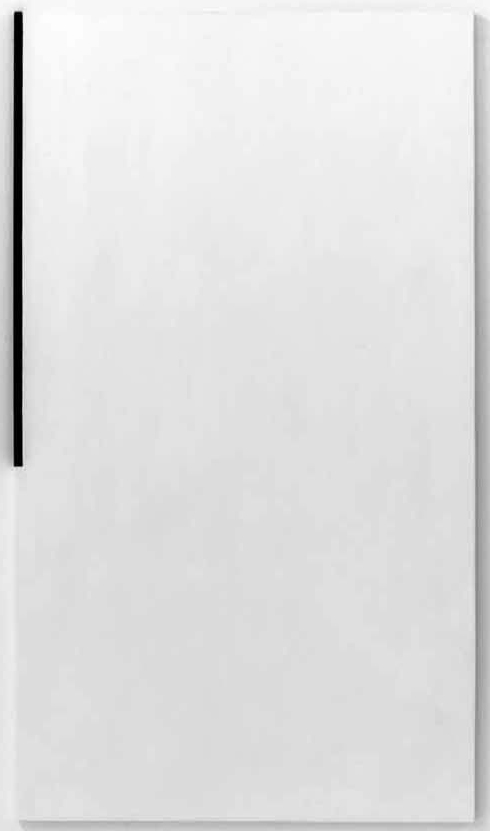Untitled “Α short commentary”
Drawings with pencil 50x70cm
Painting Installation
Oil on Canvas and Wood
Variable Dimensions
My field of research moved around issues such as, what is behind a wall’s white surface, how many layers of material are required for the wall to assume this hard, white and rigid surface, how much history, time and memories can be entrapped within these walls?
With the above reasoning in mind, I chose to treat surfaces with the addition of other materials and colors, through a progressively abstract approach. Through
multiple layers of color in violent clash with the canvas, the lower layers of color managed to assume a leading role. White color has become the starting point, as it
creates a pure and neat environment, it tends to project intense and emphatic shapes and outlines and imprints additional contradictions. Through the clarity, I am lead to the solidity of a surface with an intense delineation of the gesture. The whiteness presents more clearly each outline and further strengthensthe need for thorough observation of the works.
Shapes and forms are being transformed through the surfaces (canvas), attempting to create a space of a general whiteness, where the emphatic absence of other colors, makes the painting objects more apparent and simultaneously more disembodied. Through the persistent use of white, the impression of clarity, coldness,
inertia is cultivated. In any case, the aesthetic and interpretive experience belongs exclusively to the viewer of the space.
My aesthetic choice for the diffusion of white from the canvases to the space, is associated with what has been argued by Kasimir Malevich in one of his essays
for the 10th Artists’ State Fair in 1919 in Moscow, basically saying that: “New framesworks of pure colour must be created based on what colour demanded and also
that colour, in its turn, must pass out of the pictorial mix into a independent unity, a structure in which it would be at once individual in a collective environment and individually independent”.
My works, white is incorporated into the space and works as an example of reminiscent of the white, unwritten surface, (tabula rasa), that every aspiring artist, (painter, musician, writer), is called to fill in. For the duration of this act, the artist can compete with the capability offered by art, to make the impact of his creative imagination
tangible and evident, through the impression of the subjective recording of his experiences. During the whole process for the creation of this work, I have acted as a mediator, trying to discover what is found behind a visible surface. I tried to show how many layers of material coexists within the specific boundaries of a frame, by examining the morphological relationships of the resulting geometrical shapes. Initially, I looked for the autonomy of each individual part of the work separately, prior to their incorporation into each surrounding environment. My main concern was for the positioning of my works to be in a constant dialogue with the environment receiving them.


























































